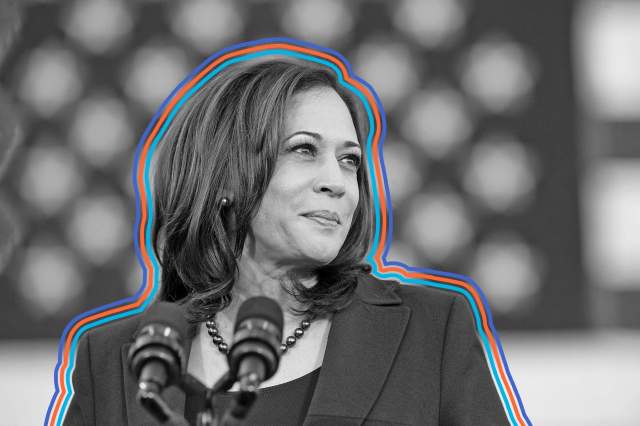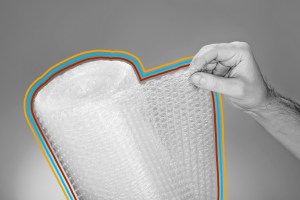
Thomas Jefferson — VP to President John Adams
While in England in 1786 on diplomatic business, Thomas Jefferson visited the birthplace and home of one of his idols: William Shakespeare. He was joined by John Adams, who was then the U.S. ambassador to Britain. The pair weren’t particularly impressed when they got to Stratford-Upon-Avon — Adams called it "small and mean," and Jefferson was appalled by the costs, noting each amount paid ("for seeing house where Shakespeare was born, 1 shilling; seeing his tomb, 1 shilling; entertainment, 4 shillings …").
But the two Founding Fathers did partake in a custom of the time: They cut off a bit of an old wooden chair that was reportedly Shakespeare's own as a souvenir. Some 220 years later, the chip was displayed at Jefferson's Monticello home, along with a wry note he'd written: "A chip cut from an armed chair in the chimney corner in Shakespeare's house at Stratford on Avon said to be the identical chair in which he usually sat. If true like the relics of the saints it must miraculously reproduce itself."

Elbridge Gerry — VP to President James Madison
Elbridge Gerry’s political chicanery as the governor of Massachusetts was so legendary, he gave his name to the practice of redistricting with political aims: gerrymandering.
The word was coined after Gerry’s party drew some absurd state Senate districts in order to elect more Democratic-Republicans, at the expense of their rival party, the Federalists. Redistricting with political aims wasn’t a new practice, but this was a particularly brazen example — one district resembled a salamander — and after Gerry signed off on the bill, critics dubbed it a "gerry-mander."

Martin Van Buren — VP to President Andrew Jackson
Van Buren was a politico of many nicknames: Friends called him the Little Magician thanks to both his stature — he stood about 5 feet 6 inches tall — and his cunning strategy as a politician, and his enemies called him the Fox, for the same reason. After the financial panic of 1837 while he was President, he won a nickname that helped doom his career: Critics called him Martin Van Ruin.
More Interesting Reads

John Tyler — VP to President William Henry Harrison
John Tyler became the first Vice President to assume the presidency when William Henry Harrison died after a month in office. Some opposed his assumption of the office by arguing that the Constitution only gave him the duties and powers of the President, not the presidency itself. (Former President John Quincy Adams complained that Tyler was "in direct violation both of the grammar and context of the Constitution.")
Tyler ignored them — even when his party expelled him — and went about enacting his agenda and finishing Harrison's term as President. Post-presidency, he purchased a plantation in Virginia and renamed it Sherwood Forest (after Robin Hood's famed forest), because he reportedly saw himself as a political outlaw.

Adlai Stevenson — VP to President Grover Cleveland
Both Adlai Stevenson I and a grandson who shared his name a half-century later ran for President unsuccessfully during their careers.
But as Vice President, the elder Stevenson came the closest to actually assuming the office, albeit unwittingly. In 1893, President Grover Cleveland had a dangerous surgery in secret — on a yacht — to remove a cancerous mouth tumor and part of his jaw.

Charles G. Dawes — VP to President Calvin Coolidge
Charles Dawes is the only Vice President (so far) who has written a No. 1 pop song. A self-taught pianist, he wrote a tune called "Melody in A Major" in 1911. Lyrics were added in 1951 and the song was renamed "It's All in the Game," but it wasn’t until 1958 when a version of the song sung by Tommy Edwards rose to No. 1 on the Billboard Hot 100 chart in the U.S. and on Britain's singles chart. Eventually, the song would be covered by artists including Isaac Hayes, Elton John, and Barry Manilow.

Charles Curtis — VP to President Herbert Hoover
Charles Curtis is the highest-ranking Native American to ever serve in the federal government. Born in the Kansas Territory in 1860, Curtis was three-eighths Native American and spoke French and Kansa, the language of the Kaw people, before he spoke English.

Alben W. Barkley — VP to President Harry S. Truman
If you’ve ever called a Vice President "veep," you have Alben Barkley's grandson to thank: The Vice President told reporters once that his young grandson had suggested he be referred to as "Veep" instead of the clunkier "Mr. Vice President." While his successor, Richard Nixon, declined to be called by the same nickname, it has become common vernacular for referencing the office and position.

Nelson A. Rockefeller — VP to President Gerald Ford
Nelson Rockefeller liked his co-op apartment at 810 Fifth Avenue in New York City so much that he expanded it up, down, and to the side. During his first marriage, he bought the floors above and below him and grew the home to a 30-room triplex. After divorcing his first wife, the couple split the triplex — he took the bottom floor and she kept the top two. Later, he bought an apartment next door, joining it with his portion of the triplex. He and his second wife reportedly stuck to the next-door elevator, to keep their distance from the first Mrs. Rockefeller. The former Vice President died in 1979, just months before Richard Nixon bought an apartment on the same block.

Kamala Harris — VP to President Joe Biden
The 49th Vice President has a name filled with symbolism. Her mother, Shyamala, named her after a Sanskrit term for the lotus flower, which has a powerful meaning in Indian culture. Kamalā is also another name for a Hindu goddess of wealth and good fortune better known as Lakshmi. Kamala's middle name, "Devi," is a general term for a Hindu goddess in Sanskrit.











